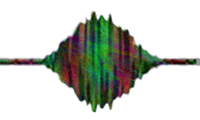Quantum Gravity using the model of Causal Dynamical Triangulations
Maestro project

Since antiquity humans have been trying to understand fundamental laws which govern the Universe. Physical theories formulated before the beginning of the 20th century are nowadays called classical. They are efficient in describing nature in macroscopic scales, one encounters in everyday life, but they completely fail in micro world, comparable or smaller than the size of an atom. In order to describe physics of micro scales one has to use Quantum Mechanics which was discovered in the beginning of the 20ᵗʰ century. The biggest success of Quantum Mechanics so far has been the formulation of the, so called, Standard Model. The model perfectly, i.e. in full agreement with any performed experiment, describes three of four fundamental interactions (these are electromagnetic, week and strong interactions). The missing element is the gravitational interaction which has not been quantized yet. Modern classical (non-quantum) theory of gravitation has been formulated around 100 years ago by Albert Einstein. It is called the General Theory of Relativity and it attributes gravitational force to a curved geometry (shape) of four dimensional spacetime. The theory perfectly describes all macroscopic objects such as stars, black holes or the entire Universe. Recent discovery of gravitational waves has been a spectacular demonstration of its application and validity.
Causal Dynamical Triangulations (CDT) is an approach which aims at reconciling Einstein’s General Theory of Relativity with Quantum Mechanics. It is commonly believed that quantum effects of gravitational interaction become important at ultra short scales, billion of billions times shorter then the radius of an atomic nuclei. Despite the fact that such short scales are not currently (and maybe will never be) accessible by any direct experiment, physical laws governing spacetime at these scales are important in understanding evolution of very early Universe or accurately describing extreme spacetime conditions, such as properties of a center of a black hole. Therefore for almost 100 years physicists have been struggling to combine laws of quantum mechanics and a theory of gravitation in a single theoretical setup of quantum gravity. In CDT one can investigate quantum gravity using complicated numerical simulations which allow one to measure quantum gravitational effects by “building” spacetime from multidimensional objects called simplices, just as children build complicated structures from Lego blocks. Although the blocks themselves are three-dimensional cuboids, one can use them to construct objects of various geometrical characteristics. If one places Lego blocks on top of each other one will obtain a one-dimensional line, instead one can use the same blocks to built a two-dimensional surface or a three-dimensional brick. One can also construct an object which is effectively neither one, two nor three dimensional, e.g. it branches at each construction step. In CDT the ”blocks” are slightly more complicated as they are four-dimensional (they have three spatial dimensions + time). It is already known that CDT quantum geometry can exist in several phases of different physical properties, just as for example water can be found in various phases (solid, liquid or gas). But in contrast to water CDT phases vary by the effective spacetime dimension, just as Lego constructions described above. Water phase transitions (e.g. melting/freezing) are triggered by changes in temperature and pressure. In CDT the phase transitions are triggered by changes in parameters of Einstein’s theory (the Newton’s constant and the cosmological constant). It is possible that such transitions took place in very early Universe and therefore their understanding is very important.
The key assumption of CDT is the conservation of the, so called, spatial topology of the Universe. The topology describes very basic features of admissible spatial geometries (shapes of space). These features are not changed even after a very radical deformation of a geometry. As an analogy one can imagine that space is a complicated plasticine object, which can be twisted, bended, crushed or stretched, but one is not permitted to hollow or tear it into pieces, nor to join its parts together (for example one can transform a plasticine ball into a plasticine cube but one cannot transform it into a plasticine bagel). Since we don’t know the real topology of the Universe, one can only investigate how some chosen topology influences various physical results. The studies of CDT performed so far were mostly done for spherical spatial topology (space could be transformed into three-dimensional generalization of a ball surface). The research project is aimed at investigating the properties of CDT for toroidal spatial topology (three dimensional generalization of a bagel surface).